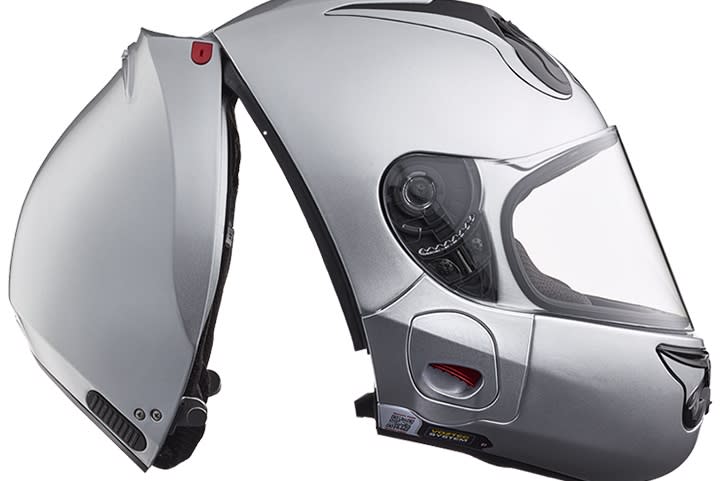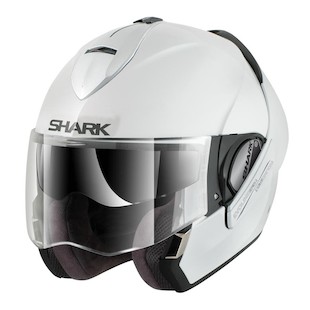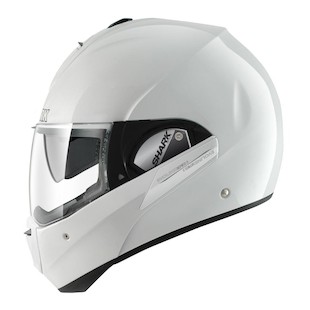Zeus36
Well-Known Member
Hinged helmet eliminates the chin strap and allows for better fit:
http://finance.yahoo.com/news/motorcycle-helmet-makes-wearing-removal-084406264.html

Motorcycle helmets have evolved over the years to lightweight technological marvels of safety. According to the Insurance Institute for Highway Safety (IIHS), helmets are 37 percent effective in preventing motorcycle deaths and 67 percent effective in preventing brain injuries. However, the design structures of the helmets have remained mostly unchanged for a while. We still have four or five basic types, including the full face helmet, open face or three-quarter, the half helmet, and the modular. For the most part, these helmets will not fit properly without a chin strap and by design are loose in certain areas to allow the rider’s head to fit. One Australian company, Vozz Helmets, is aiming to expand the possibilities of helmet safety and design, right down to the way we put one on. Vozz’s Voztec System, as they call it, enjoys some advantages over traditional helmet design. The helmet operates with a rear opening hinge, allowing the rider to snap the helmet on rather than squeezing their head into it. Because of this, the helmet can be made to fit closer, since the opening at the bottom does not have to be large enough to fit a human head. Related: Mohawk smart helmet does it all: GPS, camera, emergency texts The snug fit has eliminated the need for a chin strap. Instead, the Vozz helmet has an adjustable chin cup. The chin bar extends underneath the jawline, giving the helmet a more aerodynamic shape while also providing extra protection. There is no “strap creep,” which occurs when a strap loosens over time with use and wear, and fewer snag points. In an emergency situation, medical personnel must remove the injured rider’s helmet without causing undue stress on the neck and spine. Modern helmets do have a safety release system, usually in the form of red tabs that, when pulled, release the cheek pads from the helmet and allow easier removal. In extreme cases, the helmet must be cut off the rider’s head. Vozz’s safety release system allows the helmet to be removed safely and in less time than a normal brain bucket. Vozz will be releasing their own helmet, the RS 1.0, and the company says that the Voztec System can be incorporated into any other full face helmet. The RS 1.0 is available with 3 shell sizes and 3 EPS liners, in addition to comfort liners. The helmet is DOT and ECE approved, and will run for about $900 including helmet bag and tinted visor. Look for its launch in early 2016.

http://finance.yahoo.com/news/motorcycle-helmet-makes-wearing-removal-084406264.html
Motorcycle helmets have evolved over the years to lightweight technological marvels of safety. According to the Insurance Institute for Highway Safety (IIHS), helmets are 37 percent effective in preventing motorcycle deaths and 67 percent effective in preventing brain injuries. However, the design structures of the helmets have remained mostly unchanged for a while. We still have four or five basic types, including the full face helmet, open face or three-quarter, the half helmet, and the modular. For the most part, these helmets will not fit properly without a chin strap and by design are loose in certain areas to allow the rider’s head to fit. One Australian company, Vozz Helmets, is aiming to expand the possibilities of helmet safety and design, right down to the way we put one on. Vozz’s Voztec System, as they call it, enjoys some advantages over traditional helmet design. The helmet operates with a rear opening hinge, allowing the rider to snap the helmet on rather than squeezing their head into it. Because of this, the helmet can be made to fit closer, since the opening at the bottom does not have to be large enough to fit a human head. Related: Mohawk smart helmet does it all: GPS, camera, emergency texts The snug fit has eliminated the need for a chin strap. Instead, the Vozz helmet has an adjustable chin cup. The chin bar extends underneath the jawline, giving the helmet a more aerodynamic shape while also providing extra protection. There is no “strap creep,” which occurs when a strap loosens over time with use and wear, and fewer snag points. In an emergency situation, medical personnel must remove the injured rider’s helmet without causing undue stress on the neck and spine. Modern helmets do have a safety release system, usually in the form of red tabs that, when pulled, release the cheek pads from the helmet and allow easier removal. In extreme cases, the helmet must be cut off the rider’s head. Vozz’s safety release system allows the helmet to be removed safely and in less time than a normal brain bucket. Vozz will be releasing their own helmet, the RS 1.0, and the company says that the Voztec System can be incorporated into any other full face helmet. The RS 1.0 is available with 3 shell sizes and 3 EPS liners, in addition to comfort liners. The helmet is DOT and ECE approved, and will run for about $900 including helmet bag and tinted visor. Look for its launch in early 2016.





